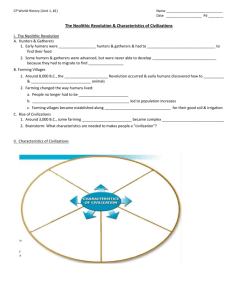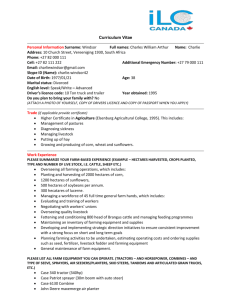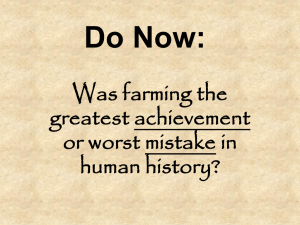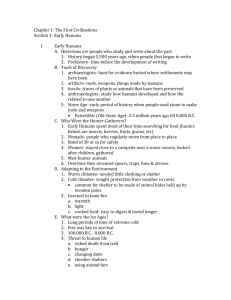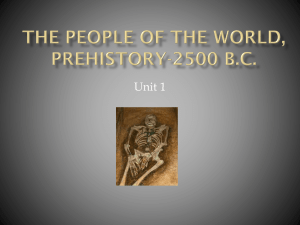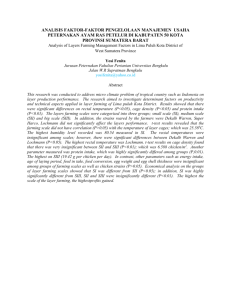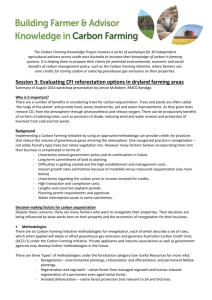vocabulary - Woodland Hills School District
advertisement
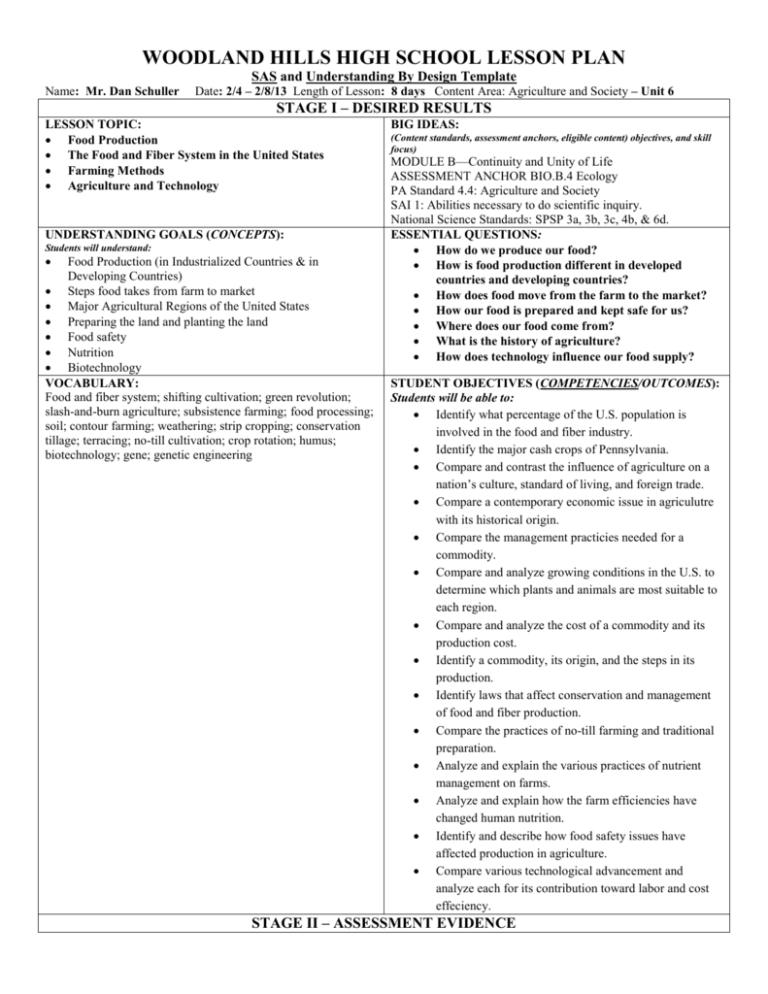
WOODLAND HILLS HIGH SCHOOL LESSON PLAN SAS and Understanding By Design Template Name: Mr. Dan Schuller Date: 2/4 – 2/8/13 Length of Lesson: 8 days Content Area: Agriculture and Society – Unit 6 STAGE I – DESIRED RESULTS LESSON TOPIC: Food Production The Food and Fiber System in the United States Farming Methods Agriculture and Technology UNDERSTANDING GOALS (CONCEPTS): Students will understand: Food Production (in Industrialized Countries & in Developing Countries) Steps food takes from farm to market Major Agricultural Regions of the United States Preparing the land and planting the land Food safety Nutrition Biotechnology VOCABULARY: Food and fiber system; shifting cultivation; green revolution; slash-and-burn agriculture; subsistence farming; food processing; soil; contour farming; weathering; strip cropping; conservation tillage; terracing; no-till cultivation; crop rotation; humus; biotechnology; gene; genetic engineering BIG IDEAS: (Content standards, assessment anchors, eligible content) objectives, and skill focus) MODULE B—Continuity and Unity of Life ASSESSMENT ANCHOR BIO.B.4 Ecology PA Standard 4.4: Agriculture and Society SAI 1: Abilities necessary to do scientific inquiry. National Science Standards: SPSP 3a, 3b, 3c, 4b, & 6d. ESSENTIAL QUESTIONS: How do we produce our food? How is food production different in developed countries and developing countries? How does food move from the farm to the market? How our food is prepared and kept safe for us? Where does our food come from? What is the history of agriculture? How does technology influence our food supply? STUDENT OBJECTIVES (COMPETENCIES/OUTCOMES): Students will be able to: Identify what percentage of the U.S. population is involved in the food and fiber industry. Identify the major cash crops of Pennsylvania. Compare and contrast the influence of agriculture on a nation’s culture, standard of living, and foreign trade. Compare a contemporary economic issue in agriculutre with its historical origin. Compare the management practicies needed for a commodity. Compare and analyze growing conditions in the U.S. to determine which plants and animals are most suitable to each region. Compare and analyze the cost of a commodity and its production cost. Identify a commodity, its origin, and the steps in its production. Identify laws that affect conservation and management of food and fiber production. Compare the practices of no-till farming and traditional preparation. Analyze and explain the various practices of nutrient management on farms. Analyze and explain how the farm efficiencies have changed human nutrition. Identify and describe how food safety issues have affected production in agriculture. Compare various technological advancement and analyze each for its contribution toward labor and cost effeciency. STAGE II – ASSESSMENT EVIDENCE PERFORMANCE TASKS: Case Studies Key vocabulary You Solve Its! Lesson Review Questions Lab Investigations Field Study Activities Kits Active Readings (Reading Anchor) FORMATIVE ASSESSMENTS: Think-pair-share Summarizing main ideas Open-ended questions Response cards OTHER EVIDENCE: Class participation Unit Exam STAGE III: LEARNING PLAN INSTRUCTIONAL PROCEDURES: ACTIVE ENGAGEMENT: Note-taking Partnering Cooperative Learning Summarizing Whole Class Response SCAFFOLDING: Guided notes Build Vocabulary Chunking Teacher Prompting Build on Prior Knowledge OTHER: Picture of the Day Power Point with guided note packets Class discussion Lab investigations Assignments (Class & Home) DAY MINI LESSONS NUMBER/DATE MATERIALS AND RESOURCES: Computer Computer projector Textbooks Folders Handouts Lab Materials Laptops CONTENT AREA READING: Text Reading Active Readings Case Studies Monday DAY Tuesday INTERVENTIONS: Redirection during class. One on one assistance. Moving seat to a more productive location. After class/school tutoring. Corrections on assignment/exam. Extension/Extended time to complete assignment/exam. Alternative assignment. Conference with other staff. (roster teachers, counselors or administrators) Conference with parent. DAY Wednesday DAY ASSIGNMENTS: Unit vocabulary Guided note packets Active Readings Lab write ups/reports Lab investigations POTD sheets Case Studies Thursday DAY Friday 106 2/11 Agriculture and Society 107 2/12 Agriculture and Society 108 2/13 Agriculture and Society 109 2/14 Agriculture and Society 110 2/15 Agriculture and Society OBJECTIVE(S) By the end of the lesson each student will be able to: Compare and contrast the influence of farming in history. Explain the pros and cons of the green revolution. Explain the steps in food production. Explain the steps in food production. Cont. Compare modern and traditional agriculture. Compare modern and traditional agriculture. Identify the ten agricultural regions of the United States. PROCEDURES / TECHNIQUES Explain You Solve It! Agricultue timelines. PairShares. Turn in PairShares. Power Point notes on the Green Revolution. Explain Field Study. Food Inc. Video Clip. Power Point notes on the progression of farming. Power Point notes on the progression of farming. Map work in guided note packets. TOPIC To reach objectives Homework: PairShare Due tomorrow. Field Study Lab Assignment. Map Work. Finish guided note packet for homework. Field Study Lab Assignment.





